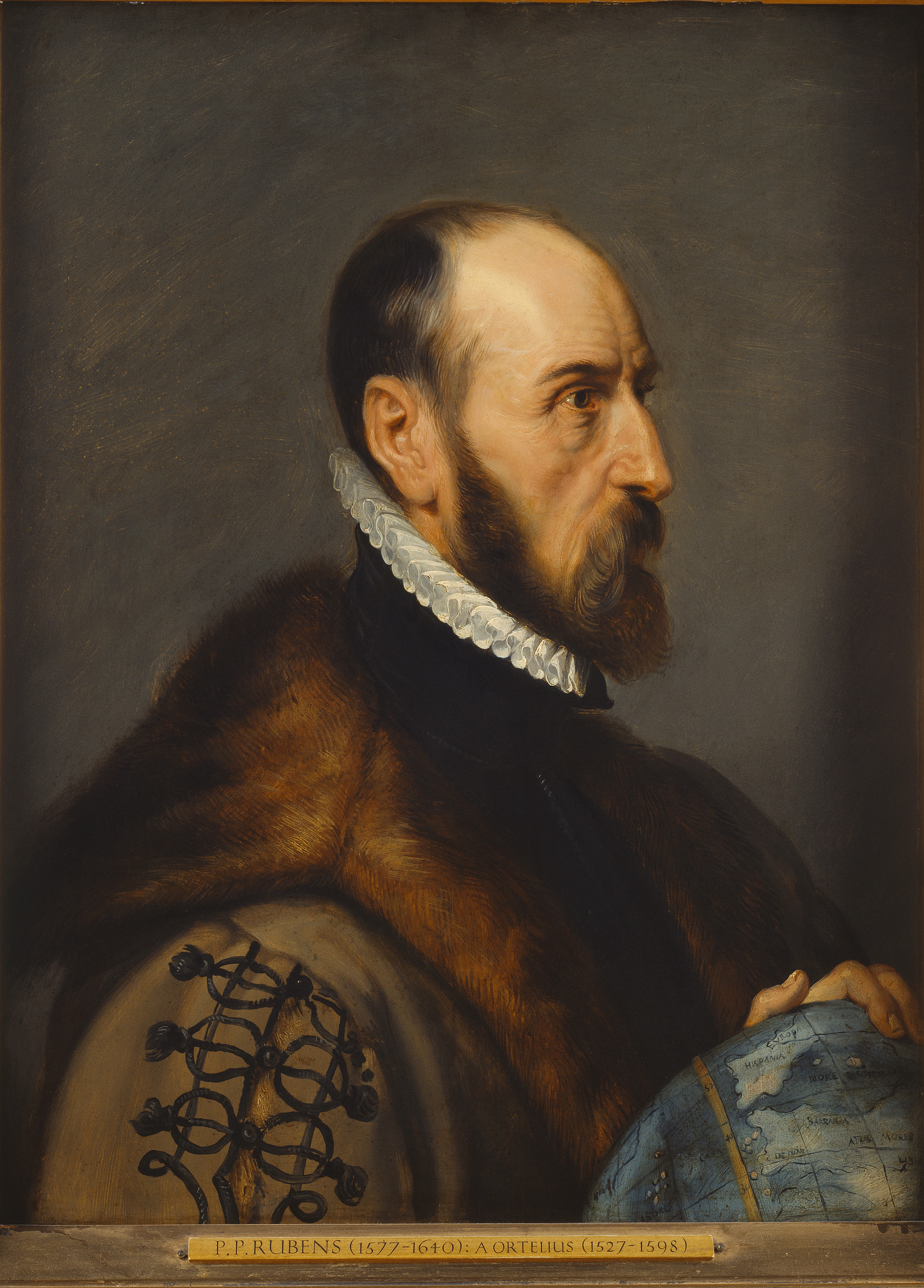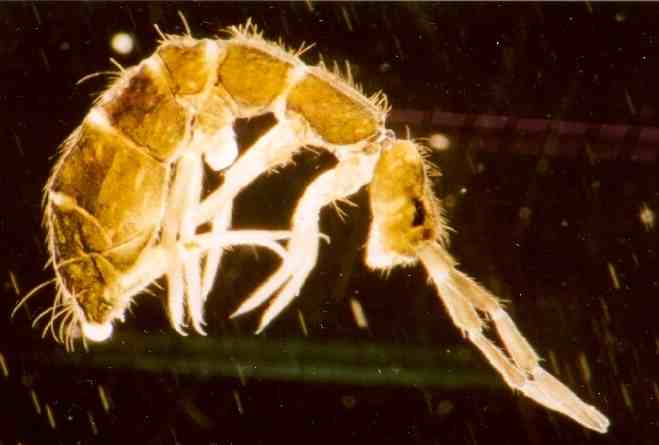|
Marie Hammer
Marie Signe Hammer née Jørgensen (1907–2002) was a Danish zoologist and entomologist who specialized in moss mites. In the 1930s and 1940s, she undertook research in Iceland, the Faroe Islands and Greenland. She later extended her investigations to North and South America, New Zealand, and Asia, discovering some 150 new genera and almost a thousand new species. Her research supported the dispersal of species as a result of continental drift as described in her 1979 thesis together with John Anthony Wallwork titled ''A Review of the World Distribution of oribatid mites in Relation to Continental Drift''. Early life Born in Copenhagen on 20 March 1907,Jørgensen was the daughter of Niels Rasmussen Jørgensen (1879–1967) and Alma Kristine Rasmussen (1878–1960). After her parents had divorced when she was seven, she was brought up by her mother on a farm in Nivå. After matriculating from Rungsted State School in 1926, she studied zoology at the University of Copenhagen, earni ... [...More Info...] [...Related Items...] OR: [Wikipedia] [Google] [Baidu] |
Zoologist
Zoology ( , ) is the scientific study of animals. Its studies include the structure, embryology, classification, habits, and distribution of all animals, both living and extinct, and how they interact with their ecosystems. Zoology is one of the primary branches of biology. The term is derived from Ancient Greek , ('animal'), and , ('knowledge', 'study'). Although humans have always been interested in the natural history of the animals they saw around them, and used this knowledge to domesticate certain species, the formal study of zoology can be said to have originated with Aristotle. He viewed animals as living organisms, studied their structure and development, and considered their adaptations to their surroundings and the function of their parts. Modern zoology has its origins during the Renaissance and early modern period, with Carl Linnaeus, Antonie van Leeuwenhoek, Robert Hooke, Charles Darwin, Gregor Mendel and many others. The study of animals has largely mov ... [...More Info...] [...Related Items...] OR: [Wikipedia] [Google] [Baidu] |
Continental Drift
Continental drift is a highly supported scientific theory, originating in the early 20th century, that Earth's continents move or drift relative to each other over geologic time. The theory of continental drift has since been validated and incorporated into the science of plate tectonics, which studies the movement of the continents as they ride on plates of the Earth's lithosphere. The speculation that continents might have "drifted" was first put forward by Abraham Ortelius in 1596. A pioneer of the modern view of mobilism was the Austrian geologist Otto Ampferer. The concept was independently and more fully developed by Alfred Wegener in his 1915 publication, "The Origin of Continents and Oceans". However, at that time his hypothesis was rejected by many for lack of any motive mechanism. In 1931, the English geologist Arthur Holmes proposed mantle convection for that mechanism. History Early history Abraham Ortelius , Theodor Christoph Lilienthal (1756), Alexan ... [...More Info...] [...Related Items...] OR: [Wikipedia] [Google] [Baidu] |
2002 Deaths
This is a list of lists of deaths of notable people, organized by year. New deaths articles are added to their respective month (e.g., Deaths in ) and then linked below. 2025 2024 2023 2022 2021 2020 2019 2018 2017 2016 2015 2014 2013 2012 2011 2010 2009 2008 2007 2006 2005 2004 2003 2002 2001 2000 1999 1998 1997 1996 1995 1994 1993 1992 1991 1990 1989 1988 1987 1986 Earlier years ''Deaths in years earlier than this can usually be found in the main articles of the years.'' See also * Lists of deaths by day * Deaths by year (category) {{DEFAULTSORT:deaths by year ... [...More Info...] [...Related Items...] OR: [Wikipedia] [Google] [Baidu] |
1907 Births
Events January * January 14 – 1907 Kingston earthquake: A 6.5 Mw earthquake in Kingston, Jamaica, kills between 800 and 1,000. February * February 9 – The " Mud March", the first large procession organised by The National Union of Women's Suffrage Societies ( NUWSS), takes place in London. * February 11 – The French warship ''Jean Bart'' sinks off the coast of Morocco. * February 12 – The steamship ''Larchmont'' collides with the ''Harry Hamilton'' in Long Island Sound; 183 lives are lost. * February 16 – SKF, a worldwide mechanical parts manufacturing brand (mainly, bearings and seals), is founded in Gothenburg, Sweden. * February 21 – The English mail steamship ''Berlin'' is wrecked off the Hook of Holland; 142 lives are lost. * February 24 – The Austrian Lloyd steamship ''Imperatrix'', from Trieste to Bombay, is wrecked on Cape of Crete and sinks; 137 lives are lost. March * March ** The steamship ''Congo'' collide ... [...More Info...] [...Related Items...] OR: [Wikipedia] [Google] [Baidu] |
Asminderød Church
Asminderød Church ( Danish: Asminderød Kirke) is a parish church in Asminderød, now part of Fredensborg, Fredensborg Municipality som 40 km north of central Copenhagen, Denmark. History A small Romanesque church was built at the site in the first half of the 12th century. It was later in the century expanded westwards. The thick granite walls indicate that they may already then have carried a tower. The current tower and the cross vaulted ceiling of the nave date from the 15th century. The porch on the north side of the church was constructed in the first half of the 13th century and the chancel was expanded to its current size in around 1500. The southern side nave was constructed in brick in 1736. The small sacresty was added in 1839. Interior and furnishings The pulpit dates from the late 16th century, save the canopy which is from 1630. The pews are partly from the same period as the pulpit and partly constructed to a similar design in 1736. The south wall of the side na ... [...More Info...] [...Related Items...] OR: [Wikipedia] [Google] [Baidu] |
Fredensborg
Fredensborg () is a railway town located in Fredensborg Municipality, North Zealand, some 30 kilometres north of Copenhagen, Denmark. It is most known for Fredensborg Palace, one of the official residences of the Danish royal family. As of 1 January 2025, the town had a population of 8,968. History The earliest settlement in the area was the village of Asminderød. The town of Fredensborg emerged outside Fredensborg Palace, which was completed in 1722. The name, which means the Palace of Peace," commemorates the termination of the Great Northern War. Fredensborg Station opened on the new Nordbanen, North Line in 1868. Fredensborg Palace and surroundings Fredensborg Palace is mainly used by the Danish royal family in spring and autumn. Many of the houses that line the street which leads up to the main entrance to the palace are listed. This is also the location of Store Kro, a historic inn which reopened in 2014. Other landmarks Asminderød Church dates from the 12th century. T ... [...More Info...] [...Related Items...] OR: [Wikipedia] [Google] [Baidu] |
Weekendavisen
''Weekendavisen'' (meaning ''The Weekend Newspaper'' in English) is a Danish weekly broadsheet newspaper published on Fridays in Denmark. Its circulation (as of 2007) is approximately 60,000 copies, about ten per cent of which cover subscriptions outside Denmark. According to opinion polls, however, the actual number of readers is much higher (290,000 in 2007). History Until 1971 the Danish postal service distributed mail twice daily, in the morning and in the afternoon. When afternoon mail delivery was discontinued, ''Berlingske Aftenavis'' (''Berlingske Evening Newspaper''), which was the evening edition of the daily newspaper ''Berlingske Tidende'', had to cease publication, and ''Weekendavisen'' came into existence as a replacement, known for the first several years as ''Weekendavisen Berlingske Aften''. The owner and publisher of the paper is the Berlingske Officin. ''Weekendavisens logo contains the original coat of arms of ''Berlingske Tidende'', including the words " AN ... [...More Info...] [...Related Items...] OR: [Wikipedia] [Google] [Baidu] |
Springtail
Springtails (class Collembola) form the largest of the three lineages of modern Hexapoda, hexapods that are no longer considered insects. Although the three lineages are sometimes grouped together in a class called Entognatha because they have internal Arthropod mouthparts, mouthparts, they do not appear to be any more closely related to one another than they are to insects, which have external mouthparts. Springtails are omnivorous, free-living organisms that prefer moist conditions. They do not directly engage in the decomposition of organic matter, but contribute to it indirectly through the fragmentation of organic matter and the control of soil microbial communities. The word ''Collembola'' is from Ancient Greek 'glue' and 'peg'; this name was given due to the existence of the collophore, which was previously thought to stick to surfaces to stabilize the creature. Early DNA sequence studies suggested that Collembola represent a separate Lineage (evolution), evolutionary ... [...More Info...] [...Related Items...] OR: [Wikipedia] [Google] [Baidu] |
Entomologist
Entomology (from Ancient Greek ἔντομον (''éntomon''), meaning "insect", and -logy from λόγος (''lógos''), meaning "study") is the branch of zoology that focuses on insects. Those who study entomology are known as entomologists. In the past, the term ''insect'' was less specific, and historically the definition of entomology would also include the study of animals in other arthropod groups, such as arachnids, myriapods, and crustaceans. The field is also referred to as insectology in American English, while in British English insectology implies the study of the relationships between insects and humans. Over 1.3million insect species have been described by entomology. History Entomology is rooted in nearly all human cultures from prehistoric times, primarily in the context of agriculture (especially biological control and beekeeping). The natural Roman philosopher Pliny the Elder (23–79 CE) wrote a book on the kinds of insects, while the scientist of Kufa, ... [...More Info...] [...Related Items...] OR: [Wikipedia] [Google] [Baidu] |
Knud Rasmussen
Knud Johan Victor Rasmussen (; 7 June 1879 – 21 December 1933) was a Greenlandic-Danish polar explorer and anthropologist. He has been called the "father of Eskimology" (now often known as Inuit Studies or Greenlandic and Arctic Studies) and was the first European to cross the Northwest Passage via dog sled. He remains well known in Greenland, Denmark and among Canadian Inuit.Elizabeth Cruwys, 2003. Early years Rasmussen was born in Jacobshavn (now called Ilulissat), Greenland, the son of a Danish missionary, the vicar Christian Rasmussen, and an Inuit, Inuk–Danish mother, Lovise Rasmussen (née Fleischer). He had two siblings. Rasmussen spent his early years in Greenland among the Kalaallit where he learnt to speak Greenlandic language, Kalaallisut, hunt, drive dog sleds and live in harsh Arctic conditions. "My playmates were native Greenlanders; from the earliest boyhood I played and worked with the hunters, so even the hardships of the most strenuous sledge-trips b ... [...More Info...] [...Related Items...] OR: [Wikipedia] [Google] [Baidu] |
University Of Copenhagen
The University of Copenhagen (, KU) is a public university, public research university in Copenhagen, Copenhagen, Denmark. Founded in 1479, the University of Copenhagen is the second-oldest university in Scandinavia, after Uppsala University. The University of Copenhagen consists of six different Faculty (division), faculties, with teaching taking place in its four distinct campuses, all situated in Copenhagen. The university operates 36 different departments and 122 separate research centres in Copenhagen, as well as a number of museums and botanical gardens in and outside the Danish capital. The University of Copenhagen also owns and operates multiple research stations around Denmark, with two additional ones located in Greenland. Additionally, University of Copenhagen Faculty of Health and Medical Sciences, The Faculty of Health and Medical Sciences and the public hospitals of the Capital Region of Denmark, Capital and Region Zealand, Zealand Region of Denmark constitute the ... [...More Info...] [...Related Items...] OR: [Wikipedia] [Google] [Baidu] |






